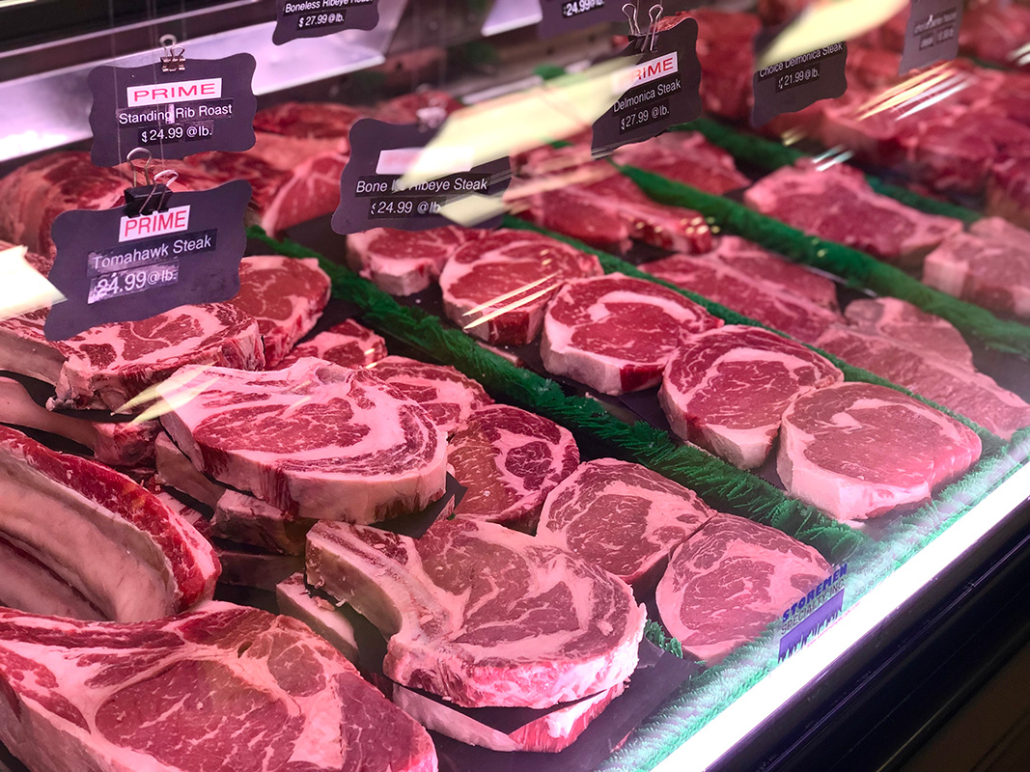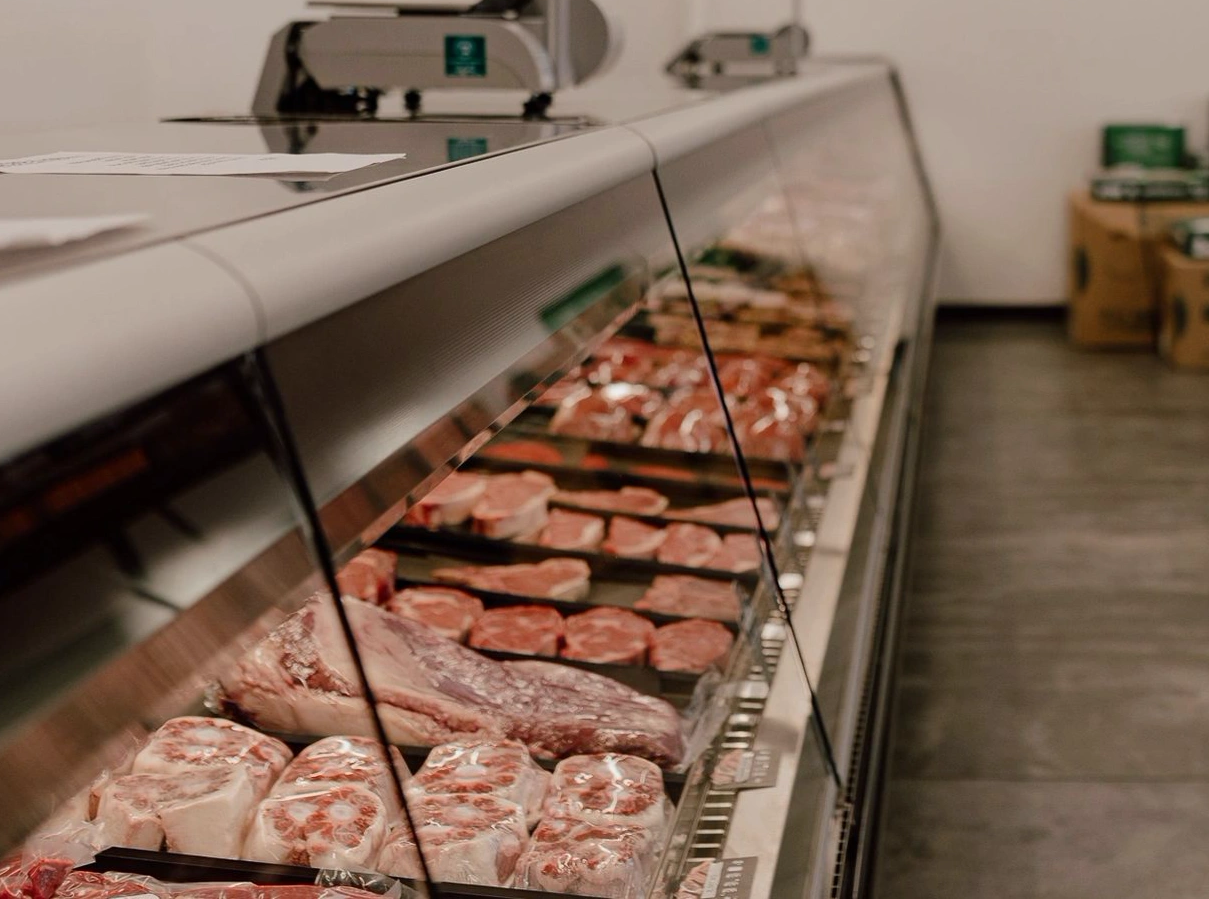Discover the Regional Taste at Bagley Farms Meat Market Edwardsville IL: Fresh and Delicious
Discover the Regional Taste at Bagley Farms Meat Market Edwardsville IL: Fresh and Delicious
Blog Article
Reveal the Art of the Butcher's Cut in a Modern Meat Market
In the ever-evolving landscape of modern meat markets, the butcher's cut has actually transcended its standard origins, merging olden craftsmanship with contemporary techniques. Today's butchers are not just cpus of meat; they are educated artisans that stress sustainability and honest sourcing. Their know-how in picking and preparing cuts tailored to specific cooking demands supplies an unrivaled eating experience. Yet, what truly establishes the contemporary butcher apart is their ability to forge a deeper link in between consumers and the origins of their meat. How do these masters balance tradition with development, and what implications does this have for the future of meat consumption?
Evolution of Butchery Methods
The evolution of butchery methods reflects a rich tapestry of innovation and adjustment driven by improvements in modern technology, changes in customer need, and a deeper understanding of meat science. Historically, butchery was a craft gave with generations, with approaches developed over centuries to optimize yield and flavor. The commercial change ushered in mechanization, transforming typical practices and enabling massive handling.
The mid-20th century saw butchery strategies further fine-tuned by clinical understandings into muscle mass biology and meat aging, improving both inflammation and preference. Developments like vacuum product packaging and refrigeration prolonged product shelf-life, permitting butchers to branch out offerings and improve quality control. This period also noted the rise of customized tools, such as band saws and meat slicers, which increased accuracy and effectiveness in meat processing.

The 21st century has actually presented electronic technology right into the butchery world. Electronic systems currently assist in tracking pet provenance and optimizing cuts to meet specific client preferences. Furthermore, a rebirth in artisanal butchery has actually emerged, mixing typical skills with modern expertise to deal with consumers seeking ethical and lasting meat alternatives. This development highlights a dynamic interplay in between practice and technology, conference contemporary demands while preserving the craft's heritage.
Comprehending Meat Cuts
Recognizing the intricacies of meat cuts is essential for both butchers and customers seeking high quality and worth. For butchers, exact cuts reflect ability and regard for the craft, ensuring marginal waste and optimal return.

Comprehending muscular tissue structure is crucial; muscular tissues used much more frequently by the animal tend to be harder and are best fit for slow-moving food preparation techniques, while less-used muscular tissues, like those discovered in the loin, are a lot more tender and ideal for grilling or roasting. Experience with these distinctions equips customers to make educated choices, improving their culinary endeavors.
Selecting Top Quality Meat
Choosing the right meat involves even more than just picking an aesthetically enticing item from the screen. The art of selecting quality meat requires a discerning eye and expertise of specific characteristics that indicate quality and excellence.
Secondly, think about the marbling, which refers to the white streaks of fat within the muscular tissue. Correct marbling is a vital indicator of tenderness and flavor, as it thaws throughout food preparation, improving the meat's juiciness. Bear in mind, greater her explanation marbling typically correlates with exceptional high quality cuts, such as USDA Prime.
Structure is another vital variable; meat needs to feel strong to the touch, not slimy or overly soft. Furthermore, be conscious of the scent. Fresh meat needs to have a tidy, neutral smell, devoid of any kind of sour or off-putting odors.
Coupling Cuts With Cooking Approaches

On the other hand, tougher cuts like brisket and chuck roast are abundant in collagen, which damages down right into gelatin when cooked slowly. These cuts are excellent for braising or slow roasting, permitting the meat to soften gradually and create deep, intricate tastes. In a similar way, cuts such as brief ribs and pork shoulder make out well with slow-cooking techniques, where expanded cooking times transform their robust appearances into delicious dishes.
Lamb shanks and oxtail, which need prolonged cooking to soften, are best prospects for cooking or sluggish simmering. These methods coax out rich, hearty flavors while maintaining moisture. By comprehending the one-of-a-kind attributes of each cut, chefs and home cooks alike can elevate their cooking creations, making certain each meal is both pleasing and memorable.
The Butcher's Duty Today
Browsing the advancing landscape of the modern meat market, the butcher's duty today extends beyond plain prep work of cuts. Contemporary butchers are cooking craftsmens, instructors, and supporters for next lasting methods.
In enhancement to crafting exact cuts, butchers currently engage directly with customers, supplying cooking advice and tailoring choices to suit specific needs and preferences. Their experience in meat aging, marbling, and flavor profiles empowers customers to make educated choices, enhancing their culinary experiences. This customized service exemplifies the butcher's developing function as a trusted consultant in the kitchen area.
Additionally, butchers are critical in decreasing waste, making use of whole animals to produce varied items such as sausages and stocks. This thorough method not just appreciates the animal however also lines up with modern look these up sustainability goals. In this way, the modern-day butcher embodies both practice and innovation, adjusting to an ever-changing market while preserving the artistry and integrity of their craft.
Verdict
Proficiency in comprehending varied meat cuts and quality signs encourages butchers to supply informed suggestions, aligning details cuts with optimum cooking techniques. By honoring historic techniques while welcoming modern demands, the butcher's role remains essential in today's innovative meat market.
Report this page